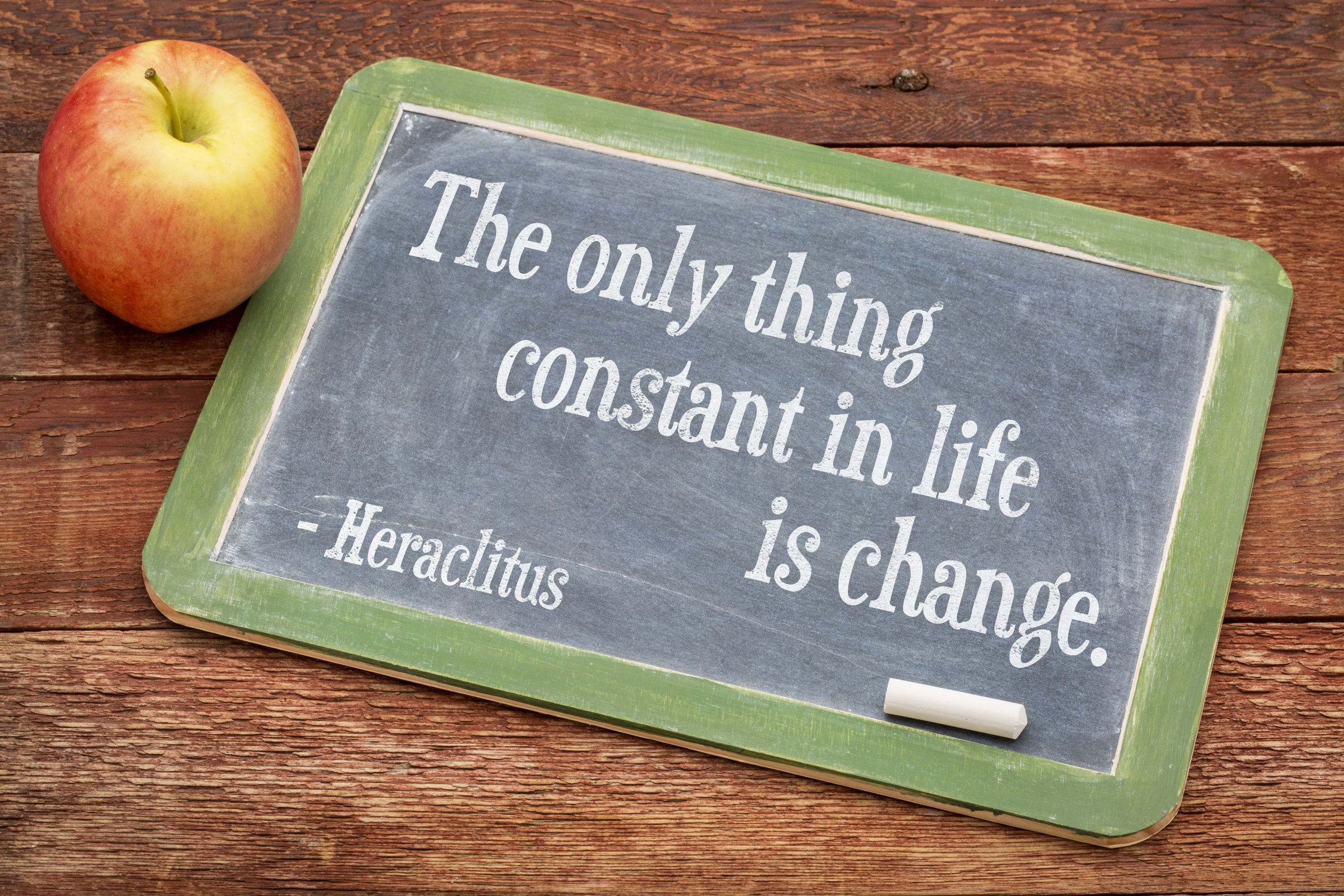Everything around us is constantly changing. And by the same token, we as humans are not meant to stop growing or progressing. Yet, we are incredibly — and often unapologetically — resistant to change. We don’t embrace change. Whether it’s because we prefer to leave well enough alone, bristle at the idea of possibly losing control, remain afraid of the unknown, or internally compare it with walking off a cliff blindfolded, we don’t … like … change. And we’ve been that way for a very long time.
You are guilty of it. Your spouse is guilty of denying change. Even Susan and I are guilty of occasionally not embracing change. But if you think for a moment about God’s word and his work, He is all about change. So, we should be, too!
When we allow ourselves to be open to change, we create in ourselves:
- Awareness — knowledge, insight, examination, evaluation
- Acceptance — decide, belief, embrace change
- Application — download it, use it, make it practical, live it out
But how do we get to that point where we are accepting of change instead of resistant or resentful toward it? This is a conversation that is so important to have with couples because while one spouse may recognize that they need to change, they aren’t the only one in the relationship. Both need to acknowledge the need for change — and then follow through with those actions — if this thing is going to work really well.
“When a truth of God is brought home to your soul, never allow it to pass without
acting on it… Once I press myself into action, I immediately begin to live.Anything less is merely existing. The moments I truly live are the moments when I act with my entire will.”
— Oswald Chambers
4 Steps to Change
- They become interested in or concerned about the need for change — Think of this as an awakening of sorts. You are allowing yourself not only to acknowledge that change can be good, but you see a need for it.
- They become convinced that the change is in their best interests or will benefit them more than cost them — To create a safe and connected marriage, you recognize that the pros of change far outweigh the negatives.
- They organize a plan of action that they are committed to implementing — Beyond saying, “I’ll change. I’ll change.” This is where you create an actionable plan that is realistic and easy to implement right away.
- They take the actions necessary to make the change and sustain the change — This is similar to item No. 3. Now that you have the plan in place to make sustainable change, you physically, mentally, and emotionally act on it.
People will embrace change when …
- They are convinced of the problem or the need for change.
- Are committed to making a change.
- They feel they have the ability to make the change.
All we are saying here is that change doesn’t have to be this big, bad meany in the room threatening to put us in a headlock. Change is good. Change is what God wants for us. And the quicker we open ourselves up and make change happen in our lives, the more of a connected marriage we will have.
We care about You and Your marriage!
Do you have the tools to communicate better in your marriage? Let us help. Send us your question in the email below!
Plus, YOU are the best way we know to spread the word about Great Marriage. Forward one of our blogs to a friend today!
Did we leave anything out? How are you trying to be healthier? What benefits has that created in your marriage? Please send us a quick email and help us keep this conversation going. Mike@MikeandSusanDawson.com.







